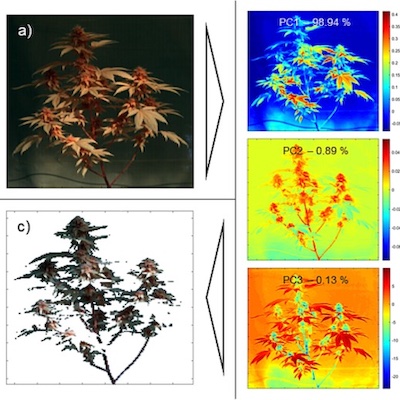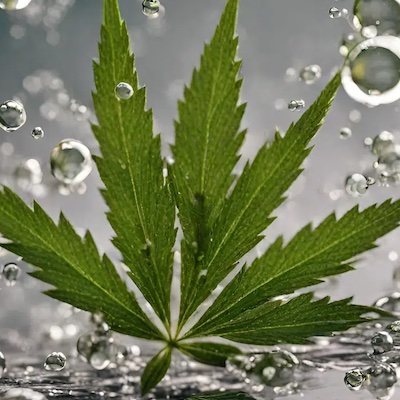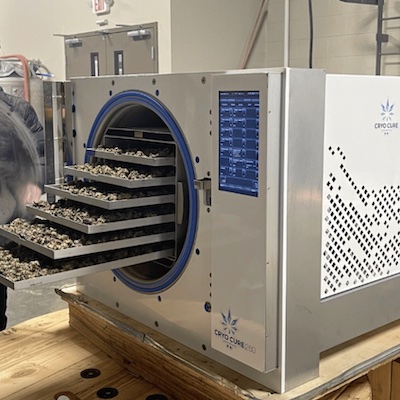BackThe latest technology in cannabis cultivation
06.11.2024

The cannabis industry is experiencing an exciting evolution as technological innovations transform the sector, with growers increasingly turning to advanced solutions to improve efficiency, yielding capacity, and crop quality. The key players of this transformation are automation and artificial intelligence (AI), but they’re certainly not the only protagonists. Let’s explore the innovations that are destined to revolutionise the world of cannabis growing!
Agriculture has always been an intensely technological field that has driven innovation since the Neolithic revolution more than 10,000 years ago. Likewise, the world of cannabis cultivation is now on the verge of a profound metamorphosis, driven by the control of machine learning, which will redefine our understanding of agriculture, genetics, and even nature itself. At the heart of this revolution is undoubtedly artificial intelligence (AI), which acts as a sentinel overseeing every stage of production. With its algorithms, AI will be able to analyse and optimise all aspects of cultivation, from seed to sale, turning data into a powerful tool to refine processes, predict trends, and drive profitability. But regulatory changes, such as those in the US or Germany, are also creating the ideal environment for further innovation, opening the floodgates to technology investment, experimentation, and the adoption of new and advanced cultivation and post-harvest practices. Let’s now analyse what advances will take this plant to new levels of sophistication.
Precision agriculture: the future of cultivation involves IoT sensors
Precision agriculture helps optimise environmental conditions such as light, humidity, and temperature in real time, thanks to intelligent sensors which are becoming more and more affordable and versatile. These sensors constantly monitor and adjust these conditions to ensure that each plant receives exactly what it needs at any given time. The result? Higher yields, better quality, and more consistent products; all achieved with minimal human intervention. Automated cultivation systems are another key trend. They include vertical growing facilities based on hydroponics or aeroponics which maximise the use of space by stacking plants in multiple layers. What’s more, these setups can deliver even greater benefits when combined with next-generation LED systems and robotics, which are already taking over the dangerous, boring, and repetitive tasks of cultivation (for example, harvesting), thereby increasing efficiency and reducing the need for manpower.
Hyperspectral imaging and 3D scanning to monitor cannabis health
AI-powered systems can also detect subtle changes in plant health before they are visible to the human eye. By using hyperspectral image recognition at different wavelengths (which allows the analysis of cannabis down to a molecular level) and 3D scanning (to monitor plant structural growth), accurate real-time models can be developed to help identify signs of stress, nutrient deficiencies, or disease through predictive analysis. Machine learning algorithms can also analyse historical weather data to predict the likelihood of pest infestations or fungal diseases. Even drones equipped with advanced sensors can monitor from above, providing real-time data. Early detection allows growers to rapidly take corrective action, avoiding widespread crop damage and ensuring the development of healthy plants with higher levels of cannabinoids.
Integration of nanotechnology applied to irrigation
Smart drip irrigation systems can accurately deliver water and nutrients directly to the roots, based on actual soil moisture levels and real-time weather conditions. This helps reduce water use by avoiding runoff and keeps the plants healthy and highly productive. The use of nanobubbles also significantly improves the ability of the roots to absorb oxygen, resulting in healthier, stronger, and hardier plants. Nanofertilisers, for instance, release nutrients in a controlled manner, which helps optimise absorption and minimise soil contamination. On the other hand, silver and copper nanoparticles, or polymer nanocapsules that release pesticides in a controlled way, have very specific applications in pest and disease control. They may help lead to more sustainable and high-yielding cannabis growing practices in the future.
Bioreactors and cryogenic pasteurisation: redefining cannabis production
One of the most intriguing technological advances is that of bioreactors, which enable the production of cannabinoids without having to grow Cannabis sativa plants. By using genetically modified yeast, bioreactors can synthesise cannabinoids on a large scale. This could revolutionise cannabis production by offering a scalable and less regulated alternative to traditional cultivation, which would in turn significantly reduce its environmental impact, lower production costs, and make cannabis more accessible. The innovative technology of cryogenic pasteurisation also addresses one of the most pressing problems in the industry: microbial contamination. In a market valued at billions of euros, this is a critical issue to maintain product quality whilst managing complex regulatory barriers. This technique combines cryogenic steam, using liquid nitrogen, with a disinfection process that brings the product to very low temperatures in a short period. This helps destroy pathogens while preserving the active compounds of cannabis (such as cannabinoids and terpenes), retaining both its potency and aromatic profile.
High-performance phenotyping: the new frontier of genetics
But there can be no evolution in cultivation without good genetics to support it. While seeds and cuttings have long been the pillars of cannabis strains, tissue cultivation stands out as the future to help preserve the desired characteristics of each variety, protecting against pathogens and maintaining a more reliable and accessible gene bank. It is a propagation technique that involves the cultivation and maintenance of plant cells, tissues, or organs under aseptic conditions in a nutritious growing medium, usually in Petri dishes. This method enables the indefinite storage of a large number of seedlings or genes, all in a minimum space. It also helps ‘clean’ the genetics by propagating only the necessary cells, leaving behind unwanted pathogens such as hop latent viroid (HLVd), which is one of the riders of the current cannabis apocalypse. But if we combine tissue culture with genetic editing and improvement technologies, we gain unprecedented control over the genetic makeup of a plant. One of the most powerful tools is CRISPR-Cas9, a pair of molecular scissors that acts as a versatile and precise gene editing system. This enables scientists to modify specific genes with millimetric precision, to achieve desirable features faster than ever before. The future possibilities of gene editing in cannabis cultivation are truly exciting. With the potential to create unique and specialised strains, breeders can now explore new combinations of cannabinoids and terpenes, offering consumers an even wider range of experiences with cannabis, which can take this plant to levels of evolution never seen before.


